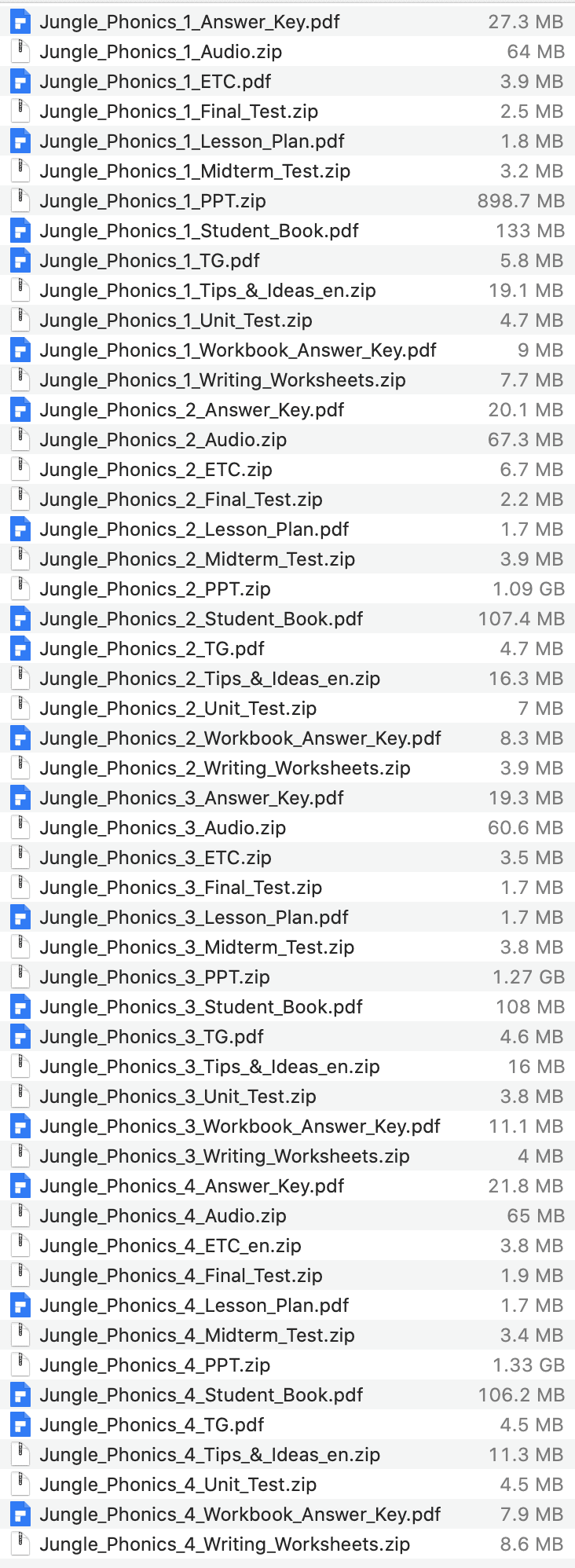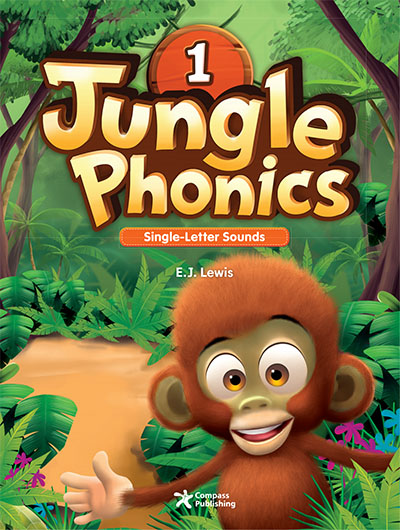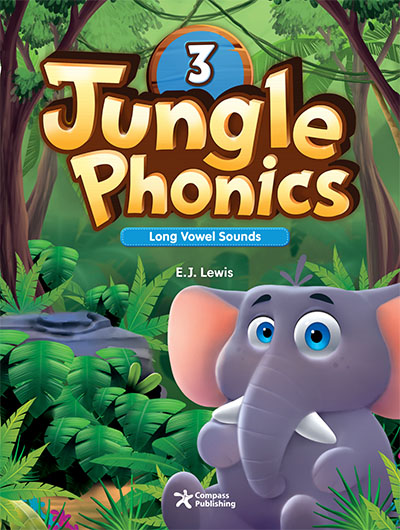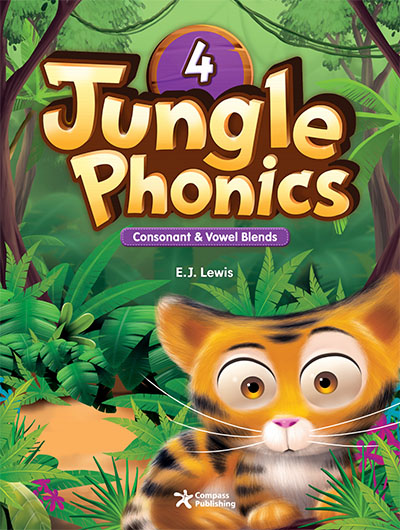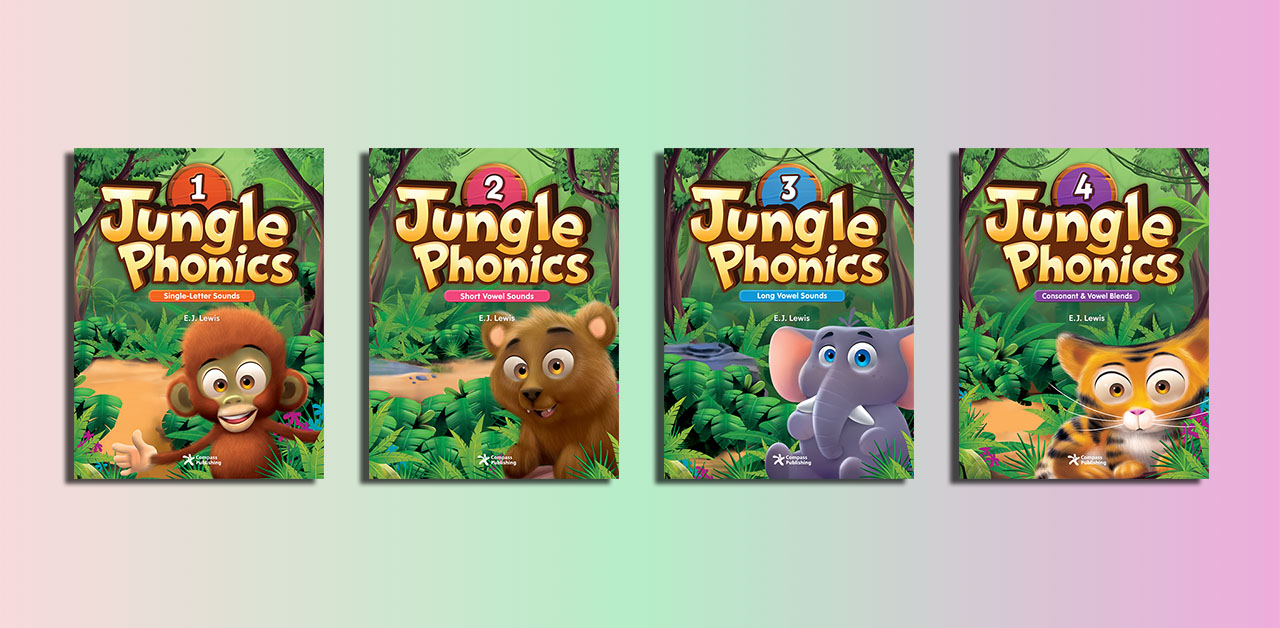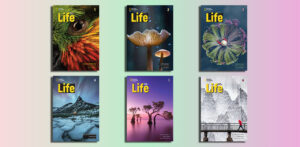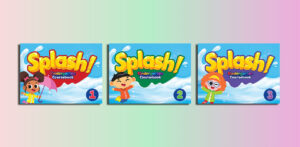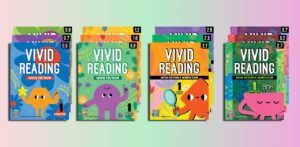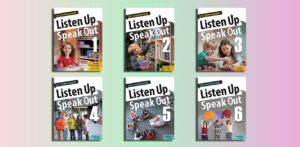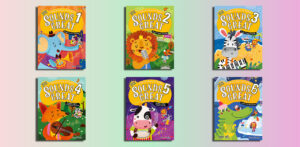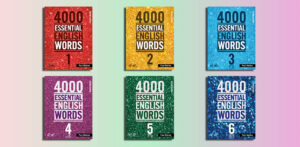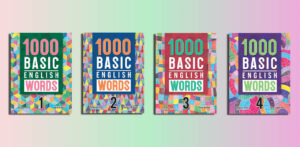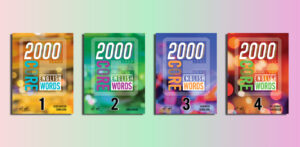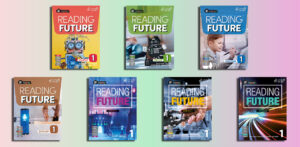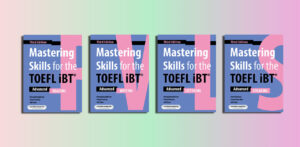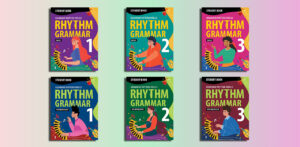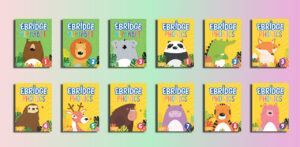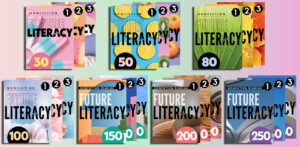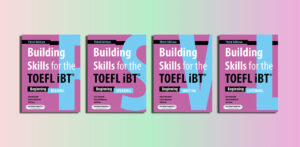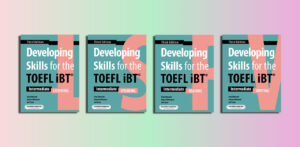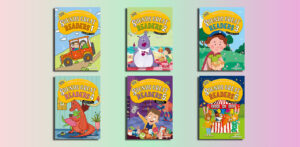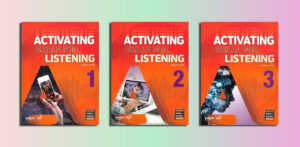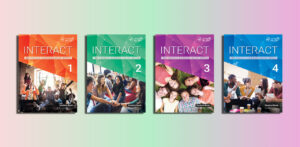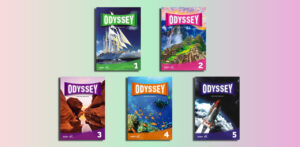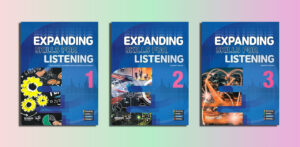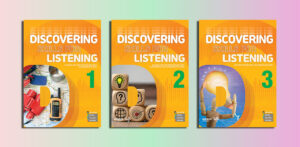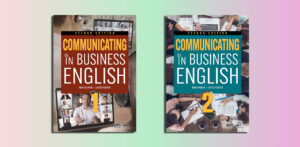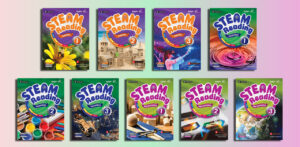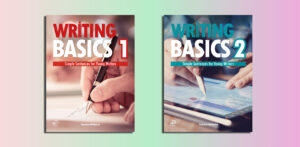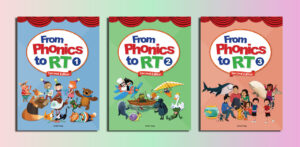Jungle Phonics (PDFs, Resources)
Level 1
Answer Key – Audio – ETC – Final Test – Lesson Plan – Midterm Test – PPT – Student Book – Teacher’s Guide – Tips & Ideas – Unit Test – WB Answer Key – Worksheets
Jungle Phonics 1 Student Book.pdf – Sample: Click
Level 2
Answer Key – Audio – ETC – Final Test – Lesson Plan – Midterm Test – PPT – Student Book – Teacher’s Guide – Tips & Ideas – Unit Test – WB Answer Key – Worksheets
Jungle Phonics 2 Student Book.pdf – Sample: Click
Level 3
Answer Key – Audio – ETC – Final Test – Lesson Plan – Midterm Test – PPT – Student Book – Teacher’s Guide – Tips & Ideas – Unit Test – WB Answer Key – Worksheets
Jungle Phonics 3 Student Book.pdf – Sample: Click
Level 4
Answer Key – Audio – ETC – Final Test – Lesson Plan – Midterm Test – PPT – Student Book – Teacher’s Guide – Tips & Ideas – Unit Test – WB Answer Key – Worksheets
Jungle Phonics 4 Student Book.pdf – Sample: Click
Overview of the “Jungle Phonics” by Compass Publishing
Contents
| ✅ Coursebook: | Jungle Phonics |
| ✅ Authors: | E.J. Lewis |
| ✅ Publisher: | Compass Publishing |
| ✅ English type: | International English |
| ✅ Levels: | Pre A1 |
| ✅ For: | Preschool, Phonics |
| ✅ Publication year: | 2017 |
Jungle Phonics by Compass Publishing is a four-level phonics series designed for young learners, particularly those in kindergarten and early elementary school, to master English sounds in a fun and engaging way. The program targets Pre-A1 CEFR level students and focuses on building phonemic awareness through a systematic, step-by-step approach. Here’s an overview of its key features:
- Target Audience and Structure: Aimed at early beginners, the series progresses from single-letter sounds (Level 1) to more complex phonetic combinations like consonant blends and digraphs (Levels 2–4). Each level includes 8 units, with Level 1 covering 96 pages (ISBN: 978-1-945387-31-9) and focusing on foundational skills.
- Engaging Jungle Theme: The program uses a vibrant jungle theme with colorful illustrations, themed stories, and characters to make learning feel like an adventure, keeping children motivated and interested.
Interactive Activities: Lessons incorporate tracing, writing, matching, listening, speaking, and reading exercises. Fun stories, chants with common sight words, and short rhyming chants reinforce learning. Frequent review units ensure retention. - Digital and Mobile Support: The series includes audio tracks (available on SoundCloud), classroom presentation tools (PPT), and a Class Booster app for PC and mobile devices. The app features games to make learning interactive, allowing students to earn points and grow avatars while tracking progress via email to teachers. Note that as of June 2020, the standalone Jungle Phonics 1 app was integrated into the BIGBOX app.
- Resources: The series offers downloadable materials like PDFs, audio, tests, answer keys, and workbooks for each level, enhancing classroom or home use.
- Educational Approach: Jungle Phonics emphasizes a structured progression to prevent overwhelming young learners, building a strong foundation for reading and writing. Its combination of fun and education fosters a love for learning.
This series is ideal for teachers and parents seeking an effective, engaging phonics program for young English learners.
Jungle Phonics 1 Student Book
Who is suitable for “Jungle Phonics”?
Jungle Phonics by Compass Publishing is suitable for:
- Young Learners: Primarily designed for kindergarten and early elementary school students (ages 4–8) who are beginning to learn English.
- English Language Beginners: Targets Pre-A1 CEFR level students, making it ideal for those with little to no prior English exposure.
- ESL/EFL Students: Perfect for non-native English speakers learning phonics to build foundational reading and writing skills.
- Teachers and Parents: Educators in classroom settings or parents homeschooling can use it to teach phonemic awareness systematically.
- Learners Needing Engagement: The jungle theme, interactive activities, and digital tools (like the Class Booster app) suit children who thrive with fun, visual, and gamified learning experiences.
It’s best for those seeking a structured, engaging phonics program to master English sounds through stories, chants, and games.
Jungle Phonics 2 Student Book
The benefits of “Jungle Phonics”
Jungle Phonics by Compass Publishing offers several benefits for young learners, particularly those at the Pre-A1 CEFR level, as well as for teachers and parents. Here are the key advantages:
- Structured Phonics Development: The four-level series systematically progresses from single-letter sounds to complex phonetic patterns (e.g., consonant blends, digraphs), building a strong foundation for reading and writing.
- Engaging and Fun Learning: The jungle theme, colorful illustrations, and themed stories make learning enjoyable, keeping young learners motivated and fostering a love for English.
- Multi-Sensory Approach: Combines tracing, writing, matching, listening, speaking, and reading activities, catering to different learning styles and reinforcing phonemic awareness.
- Interactive Digital Tools: The Class Booster app (available on PC and mobile) includes games where students earn points and grow avatars, making learning interactive and trackable for teachers via progress reports.
- Reinforcement Through Repetition: Frequent review units, chants with sight words, and short rhyming stories help solidify retention and understanding of phonetic concepts.
- Comprehensive Resources: Includes downloadable PDFs, audio tracks (via SoundCloud), workbooks, tests, answer keys, and classroom presentation tools (PPT), supporting both classroom and home learning.
- Encourages Confidence: The step-by-step approach prevents overwhelming learners, helping them gain confidence in their English pronunciation, reading, and writing skills.
- Parental and Teacher Support: Easy-to-use materials and digital integration make it accessible for educators and parents to guide children effectively.
These benefits make Jungle Phonics an effective, engaging, and versatile tool for young English learners to develop essential phonics skills.
Jungle Phonics 3 Student Book
Effective learning strategies for “Jungle Phonics”
To maximize the effectiveness of Jungle Phonics by Compass Publishing for young learners (Pre-A1 CEFR level, ages 4–8), consider the following learning strategies tailored to its structure, jungle theme, and interactive components:
Leverage the Jungle Theme for Engagement:
- Strategy: Use the vibrant jungle theme to spark curiosity. Encourage students to role-play as jungle explorers or characters from the stories to make lessons immersive.
- How: Before starting a unit, discuss the jungle setting or characters (e.g., animals) to build excitement. For example, ask, “What sound does a lion make?” to tie into phonics lessons.
- Why: The thematic approach keeps young learners motivated, making abstract phonics concepts more relatable.
Incorporate Multi-Sensory Activities:
- Strategy: Combine the program’s tracing, writing, matching, listening, and speaking exercises to engage multiple senses.
- How: Have students trace letters while saying the sound aloud, then match the letter to pictures (e.g., “A” for “apple”). Use the audio tracks for listening practice and encourage mimicking the chants.
- Why: Multi-sensory learning reinforces phonemic awareness and caters to diverse learning styles, improving retention.
Utilize Chants and Rhymes for Repetition:
- Strategy: Emphasize the short rhyming chants and sight-word songs included in each unit to reinforce phonetic patterns.
- How: Play the chants (available on SoundCloud) during lessons and encourage students to sing along. Create a routine where chants are revisited daily or weekly.
- Why: Rhythmic repetition aids memory and makes learning phonics fun, especially for young learners.
Maximize Digital Tools for Interactivity:
- Strategy: Use the Class Booster app to gamify learning and track progress.
- How: Assign app-based games as homework or in-class activities where students earn points and grow avatars. Review progress reports sent via email to identify areas needing reinforcement.
- Why: Gamification increases engagement, and progress tracking helps tailor instruction to individual needs.
Scaffold Learning with Review Units:
- Strategy: Regularly revisit the program’s review units to consolidate learning and prevent forgetting.
- How: Schedule review sessions every few weeks, using the provided tests and workbook activities. Mix review with fun activities like creating new jungle-themed stories using learned sounds.
- Why: Spaced repetition strengthens long-term retention and builds confidence in applying phonics skills.
Encourage Parental Involvement:
- Strategy: Involve parents in the learning process, especially for home-based practice.
- How: Share downloadable PDFs and audio resources with parents, guiding them to practice short activities (e.g., 5-minute chant sessions) daily. Suggest they use the app alongside their child.
- Why: Consistent reinforcement at home accelerates progress and creates a supportive learning environment.
Differentiate for Individual Needs:
- Strategy: Adapt activities based on each learner’s pace and skill level, as the program progresses from single sounds to complex blends.
- How: For struggling students, focus on Level 1 tracing and matching tasks before advancing. For faster learners, introduce Level 2–4 activities like digraphs earlier, using the workbook for extra practice.
- Why: Differentiation ensures all students remain challenged yet supported, preventing frustration.
Integrate Storytelling and Speaking:
- Strategy: Use the themed stories to encourage oral practice and creative expression.
- How: After reading a story, have students retell it in their own words or create a new jungle story using target sounds. Pair with speaking exercises from the program.
- Why: Storytelling enhances fluency and connects phonics to real-world communication, boosting confidence.
Use Visual Aids and Classroom Tools:
- Strategy: Incorporate the provided PPTs and visual materials to reinforce lessons in a classroom setting.
- How: Display PPT slides during lessons to highlight letter-sound connections or use them for group games like sound-matching quizzes.
- Why: Visual aids reinforce learning and make abstract concepts concrete for young learners.
Create a Consistent Routine:
- Strategy: Establish a predictable schedule for phonics practice to build habits.
- How: Dedicate 10–15 minutes daily to Jungle Phonics activities, blending app games, chants, and workbook tasks. Alternate between new units and reviews weekly.
- Why: Consistency helps young learners internalize phonics skills and makes learning a natural part of their routine.
By combining these strategies, Jungle Phonics becomes a highly effective tool for teaching young learners to master English sounds.
Jungle Phonics 4 Student Book
Effective teaching strategies for “Jungle Phonics”
Effective teaching strategies for Jungle Phonics by Compass Publishing focus on leveraging its structured four-level design, jungle theme, and interactive resources to engage young learners (Pre-A1 CEFR level, ages 4–8) while building phonemic awareness. These strategies are tailored for teachers in classroom settings or parents facilitating learning at home, ensuring the program’s activities and tools are used optimally.
Immerse Students in the Jungle Theme:
- Strategy: Use the jungle theme to create an engaging, story-driven learning environment.
- How: Begin lessons with a brief storytelling session about jungle characters (e.g., monkeys or parrots) to introduce target sounds. Decorate the classroom or learning space with jungle visuals or use the program’s colorful illustrations to spark interest.
- Why: The thematic approach captures young learners’ attention, making phonics lessons feel like an adventure and increasing motivation.
Blend Multi-Sensory Activities:
- Strategy: Combine the program’s tracing, writing, matching, listening, and speaking exercises to engage multiple senses.
- How: Guide students to trace letters while vocalizing sounds (e.g., “B says /b/”), then match letters to images in the workbook. Use audio tracks (available on SoundCloud) for listening practice and encourage chanting along with rhyming songs.
- Why: Multi-sensory engagement reinforces phonics retention and accommodates diverse learning styles, critical for young learners.
Incorporate Chants for Rhythm and Repetition:
- Strategy: Use the program’s rhyming chants and sight-word songs to reinforce phonetic patterns.
- How: Play chants during lessons and have students clap or move to the rhythm while repeating sounds. Dedicate 5–10 minutes per session to chanting, revisiting favorites weekly.
- Why: Rhythmic repetition enhances memorization and makes phonics practice enjoyable, especially for early learners.
Maximize the Class Booster App:
- Strategy: Integrate the Class Booster app to gamify learning and monitor progress.
- How: Assign app-based games as warm-ups or rewards in class, encouraging students to earn points and grow avatars. Use the app’s progress reports (sent via email) to identify and address individual student needs.
- Why: Gamification boosts engagement, and data-driven insights allow targeted instruction, enhancing learning outcomes.
Utilize Review Units for Spaced Repetition:
- Strategy: Schedule regular review sessions using the program’s built-in review units to reinforce learning.
- How: Incorporate review activities every 2–3 weeks, using provided tests and workbook tasks. Create fun review games, like a “sound hunt” where students find objects matching target phonemes.
- Why: Spaced repetition solidifies retention, helping students master sounds before progressing to complex patterns like blends or digraphs.
Differentiate Instruction for Varied Skill Levels:
- Strategy: Adapt lessons to accommodate different learning paces, as the program spans single sounds (Level 1) to consonant blends and digraphs (Levels 2–4).
- How: For slower learners, focus on Level 1 tracing and matching tasks with extra repetition. For advanced students, introduce Level 2–4 activities early, using workbook exercises or app challenges for enrichment.
- Why: Differentiation ensures all students are challenged appropriately, maintaining engagement and preventing frustration.
Encourage Storytelling and Speaking Practice:
- Strategy: Use the program’s themed stories to promote oral skills and creativity.
- How: After reading a story, have students retell it in pairs or create their own jungle-themed stories using target sounds. Incorporate speaking exercises, like pronouncing words from the story aloud.
- Why: Storytelling connects phonics to communication, building fluency and confidence in using English sounds.
Leverage Classroom Presentation Tools:
- Strategy: Use the provided PPTs to enhance visual learning and group activities.
- How: Display PPT slides to introduce or review letter-sound connections. Create interactive games, such as a class-wide “sound match” where students identify sounds shown on slides.
- Why: Visual aids make phonics concrete, and group activities foster collaboration and engagement.
Foster Parental Collaboration:
- Strategy: Engage parents to reinforce phonics practice at home, especially for consistent progress.
- How: Share downloadable PDFs, audio tracks, and app access with parents, suggesting short daily activities (e.g., 5-minute chant sessions or app games). Provide simple guides on how to support workbook tasks.
- Why: Home reinforcement accelerates learning and creates a consistent phonics environment.
Establish a Consistent Routine:
- Strategy: Build a predictable phonics schedule to create learning habits.
- How: Dedicate 15–20 minutes daily to Jungle Phonics, blending workbook tasks, app games, and chants. Alternate between new units and reviews weekly, using PPTs for variety.
- Why: A structured routine helps young learners internalize phonics skills and makes practice a natural part of their day.
Implementation Tips:
- Use the program’s downloadable resources (PDFs, tests, answer keys) to streamline lesson planning.
- Access demos and additional materials online via Compass Publishing’s platforms to explore the program’s full potential.
- Monitor student engagement and adjust the pace to maintain enthusiasm, especially when transitioning to complex sounds in Levels 2–4.
These strategies align with Jungle Phonics’ design, leveraging its interactive tools, engaging theme, and structured progression to create an effective and enjoyable learning experience for young English learners.

